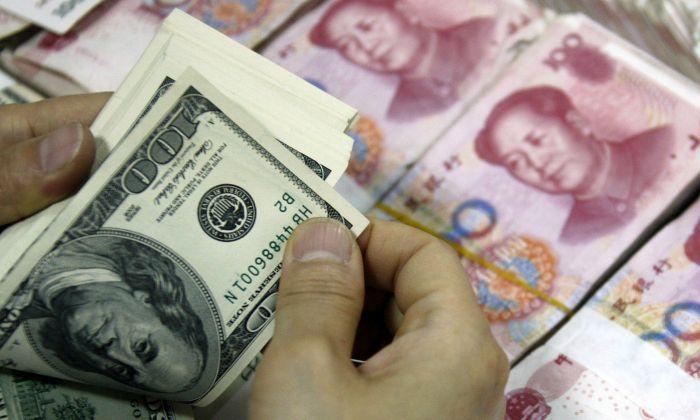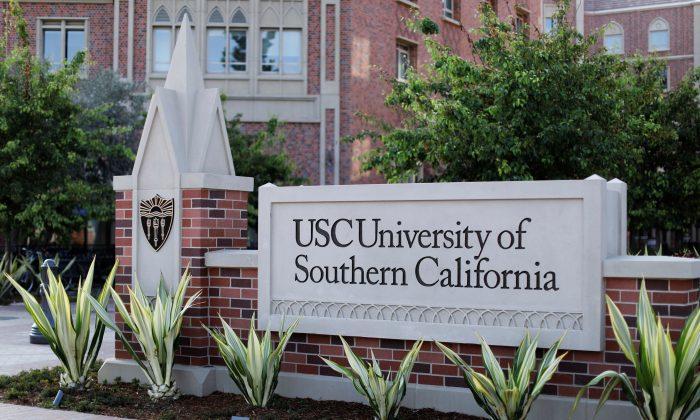While the United States and China have been in an overt trade war for more than a year, a covert one-sided assault from China has been taking place ever since it joined the World Trade Organization (WTO) in the year 2001. By not abiding by the WTO regulations for fair and reciprocal trade, regarding forced technology transfer, intellectual property theft and other trade barriers, China has accumulated a persistent trade surplus with The United States, which in turn has caused tremendous manufacturing job losses in the US.
Even though there is substantial bipartisan support for President Trump’s China policy, there is plenty of uneasiness in the Wall Street and other corners around any deviation from “Free Trade.”
Looking back at US history, foreign goods tariffs are more of a rule than an exception. The Republican Party has historically been a party of protectionism. In 1896, the GOP pledged to “renew and emphasize our allegiance to the policy of protection, as the bulwark of American industrial independence, and the foundation of development and prosperity. This true American policy taxes foreign products and encourages home industry. It puts the burden of revenue on foreign goods; it secures the American market for the American producer. It upholds the American standard of wages for the American workingman.”
In his State of the Union address in 1902, President Theodore delivered this speech: “The country has acquiesced in the wisdom of the protective-tariff principle. It is exceedingly undesirable that this system should be destroyed or that there should be violent and radical changes therein. Our past experience shows that great prosperity in this country has always come under a protective tariff.”
Looking around the world, most countries apply substantial tariffs to protect industry sectors considered critical to maintaining domestic viability. Since 1970, the US has faced stiff competition from low-cost producers around the world. Without protective mechanisms such as tariffs in place, many US industries collapsed, especially in the manufacturing sector. Steel, textile, clothing, and even automobiles have seen an especially severe adverse effect.
When a manufacturing supply chain disappears, so does the technological know-how. When a nation cedes its ability to reliably manufacture goods for its own defense or survival in the name of free trade, that is negligence on the part of policy makers. When that ability is ceded to a rival state, it is outright dangerous. US national security is at risk in unrestrained trade with China. China’s state-funded steel industry conducted dumping globally, decimated this industry in US and our western allies. The Trump Administration’s actions to declare a tariff on these products to revive our own Steel and Aluminum industry has not come a second too soon.
US currently runs a trade deficit with all of its top trading partners, including China, Canada, Mexico, Germany and Japan. The lion’s share of the deficit is with China at 65%, or $419 billion out of a total $621 Billion in 2018. But US did not always have trade deficits. In the century from 1870 through 1970, we actually had trade surplus. What are the causes of the trade deficits in the last 50 years? Clear-cut correlations are difficult to establish. However, America protectionism in the nineteenth century was certainly a factor responsible for the rise of the US as the top global economy. At its peak, the foreign goods tariff was as high as 40%. The 1944 Bretton Woods agreement established the US dollar as the world reserve currency based on the gold standard. While the separation of the US dollar and gold standard in 1970 did not unseat the dollar’s primary reserve currency status, coincidentally, trade deficits also started appearing in 1970. America gradually moved away from tariffs, instead transitioned towards bilateral and multilateral trade agreements.
One of the causes of persistent trade deficits could be a strong US dollar. A strong dollar makes it cheaper to import goods, so import volume goes up. However, this also means that it is more expensive to export, which drives down export volume. As long as the dollar remains strong, this trend would continue, unless tariffs and/or currency policy are put into place to moderate it.
In a global economy, a tariff targeted at China can only reduce deficit with China Deficit would likely increase with other, non-tariffed countries. Therefore, it is desirable to have a global tariff or currency policy. It is politically unfeasible to put a global tariff on the table, but there is a new senate bill “Competitive Dollar for Jobs and Prosperity (CDJAP)” introduced by Sens. Tammy Baldwin (D-WI) and Josh Hawley (R-MO).
The United States is the largest economy in the world, with an annual GDP of $20 Trillion. China is a close second with $15 Trillion, thanks to its acceptance into the WTO during the Clinton administration in 2001. Based on World Bank data for 2017, the Trade/GDP ratio for China was 39.8% (reduced to 38% in 2018) but only 27% for US. This data indicates China’s economy is more reliant on trade than US economy.
Many factors affect the strength or weakness of a currency. Some are market-drive, while others are deliberate manipulations to gain market advantages. As a primary world reserve currency, the US dollar uniquely receives upward pressure, especially when the rest of the global economy shows signs of weakness. Unlike the Central Banks for other countries, the US Federal Reserve is like a world central bank, not just a US central bank. As such, Federal Reserve monetary policy exerts an extremely high level of influence on the world.
The Federal Reserve raised interest rates rapidly during the Trump presidency in comparison to the Obama presidency. In addition, the Fed ended its expansive monetary policy as the economy improved. The constraint of dollar supply and the attractive higher interest rates of Treasury notes are driving the strength of Dollar higher.
In the meantime, political instability in the European Union has led to the European Central Bank lowering the value of the euro. Euro interest rate is in the negatives. Chinese Yuan broke the psychological point of 7 in the midst of the faltering economic expansion. Capital and supply chain are massively flowing out of China to southeast Asia and even back to US. Argentina’s currency plunged on Aug. 12 after the country’s center-left opposition leader won an election primary. The prospect of a populist left-leaning government taking over in Buenos Aires stirred the fear that the country would default on its debt, which caused markets to slump in response.
The weakness of these currencies is driving capital to the relative safe haven of US dollar, thus increasing the value of the dollar.
The foreign exchange trades are betting on the strong US economy for the strength of Dollar. The trading pressure further weakens Euro and other currencies, again elevates the dollar strength.
- What are the key components of this bill?
- How is it good for US Jobs?
CPA’s research also found that US Dollar Trade Weighted Index (TWEXB) rose 7.2% between January 2018 to June 2019. Each 1% of dollar appreciation has a $56.4B negative trade impact ($24.7B penalty on exports + $31.7B import subsidy). As a result, 2018’s trade deficit rose another 14%, killing jobs and growth. 2019’s trade deficit expected to deteriorate further.
- Why is this bill not a form of currency manipulation?
- Will this Bill affect the US Dollar as the world’s primary reserve currency?
US sanctions based on blocking dollar transactions will be less potent, as there will be other alternatives.
The strength of the U.S. economy will be, and has been, the primary U.S. power rather than monetary-transaction-control.
It is better for the world and better for the United States.




